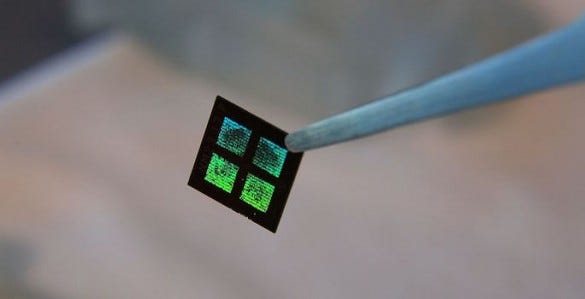March 2, 2016
Researchers at Vanderbilt University see significant progress on an implantable artificial kidney device made from microchip technology and living kidney cells.
Kristopher Sturgis
|
The artificial kidney make use of microchip filters. Image courtesy of Vanderbilt University Medical Center. |
A novel device can mimic the filtration functions of the human kidney, specifically through the use of microchip filters that can help remove waste products and hopefully keep patients off dialysis. Each chip acts as a filter, and can be inexpensively produced and precisely tailored to individual patient needs. The device was designed to operate with approximately fifteen microchips and uses live kidney cells that will grow around the microchip filters to help imitate natural kidney functions.
William H. Fissell IV, nephrologist at Vanderbilt University Medical Center and medical lead investigator on the project, says that the novelty of the device lies in the transition of polymer solutions to silicon.
"The idea was born that we might optimize the performance of an artificial membrane by changing the underlying technology from polymers to silicon," Fissell says. "The technology we use for the membranes was originally developed for the microelectronics industry. The exquisite control of size and shape of the membrane pores allows us to optimize the membranes performance."
Fissell says that optimization enables the pressure requirements for filtration, as well as reduce the size of the device for implantation. Such a device would not only do away with bulky electrical pumps but would enable patients to rely on their own heart to pump the blood. Fissell says that managing the interaction between the blood and the device proved to be the group's greatest challenge.
"Blood is a complex, nonlinear colloid suspension of cells and proteins that gels if it moves too slowly (blood clots), but is damaged by high velocity flows," he said. "To address these challenges, we have devoted effort to computational fluid dynamics modeling of blood flow to determine the stresses the blood experiences, and we have applied and developed surface chemistries to ameliorate the foreign body effect on blood."
This essentially means that the device was designed to work naturally with the blood flow of the human body. The team was even able to use computer models to enhance the shape and size of the channels to help facilitate smooth blood flow.
Of course, there have been other projects aimed at providing alternative solutions to patients reliant on dialysis machines. Just last year doctors from the University of California, Los Angeles released details of a new wearable artificial kidney device, known as WAK. While these solutions do offer a novel alternative, they do involve carrying a physical device around -- something Fissell hopes to free patients from with their implantable technology.
"The best treatment for kidney failure is a kidney transplant, but there are a half million Americans with kidney failure," Fissell says. "100,000 of them are listed for a deceased donor kidney, and only 20,000 kidney transplants are performed a year. Dialysis is life-saving but imposes crushing morbidity and mortality on patients and society as well. We plan to implant devices that allow patients to remain off dialysis, much like a transplant would."
For now, Fissell says their goal is to begin testing the implant technology on human subjects as soon as next year, permitted they can receive proper funding. Eventually, the group would need to enlist funds for a larger FDA study to ensure the safety and efficiency of the device before moving it to market. More information about the project, as well as an opportunity to support it can be found here.
Learn more about cutting-edge medical devices at BIOMEDevice Boston, April 13-14, 2016. |
Like what you're reading? Subscribe to our daily e-newsletter.
About the Author(s)
You May Also Like



